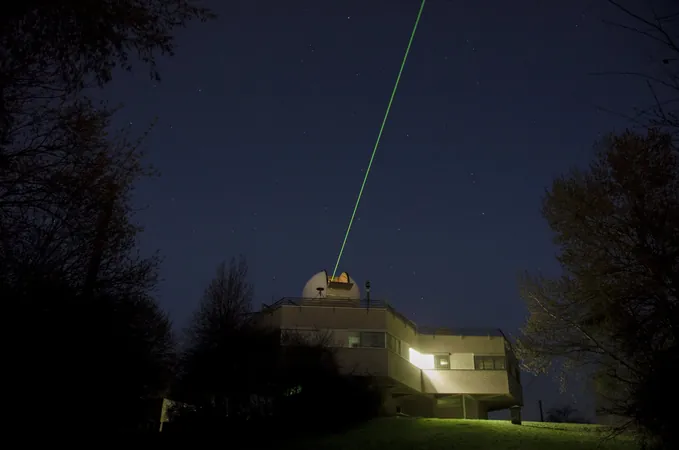
Groundbreaking ISS Discoveries Provide New Hope for Astronaut Health and Telescope Durability!
2024-11-05
Author: Ming
Revolutionizing Wound Treatment with Bioprinting
In an exciting breakthrough, researchers have unveiled a portable bioprinter capable of generating effective wound dressings from human skin cells. This innovative technology could be a game-changer for astronauts dealing with injuries in space, allowing them to administer immediate treatment and safeguard their health during missions.
The "Bioprint FirstAid" device demonstrated an efficient method of bioprinting patches to aid in wound recovery, tailored to the individual astronaut's cellular makeup. This on-demand solution is user-friendly, low-maintenance, and could significantly enhance medical response in isolated environments like space. The project was initiated by the European Space Agency (ESA) in collaboration with the German Aerospace Center (DLR).
Overcoming Space Flight-Induced Performance Limitations
Astonishingly, astronauts returning from space missions exhibit a notable decline in fine motor control and multitasking abilities. Findings suggest that these impairments could pose risks during critical operations, whether piloting spacecraft or conducting tasks on extraterrestrial surfaces like the Moon or Mars.
Utilizing a comprehensive suite of tests known as "Manual Control," scientists analyzed the cognitive, sensory, and motor function of astronauts post-flight. The research indicated that even slight physiological changes during space travel can hinder performance upon return. However, there’s promising news: performance seems to improve significantly with simulation training just before critical tasks. Experts recommend minimizing multitasking during essential mission phases to ensure safe operations.
Resilient Gamma-ray Telescope Survives Space Radiation Challenges
In a further testament to the durability of technologies developed for the ISS, the Glowbug gamma-ray telescope has proven resistant to the harsh radiation environment of space. Over the course of a year, it successfully captured gamma ray bursts (GRBs), which are vital for understanding the universe's mysteries and origins.
Given the potential for long-duration missions, the resilience displayed by Glowbug is reassuring for future explorations that could involve prolonged periods in space, including manned missions to Mars. As researchers continue to study the data gathered by Glowbug, they deepened insights into cosmic events and their implications for astrophysics.
This series of findings presents groundbreaking enhancements that not only aim to safeguard astronaut health but also expand our understanding of the universe. Stay tuned for more revolutionary space science developments!




 Brasil (PT)
Brasil (PT)
 Canada (EN)
Canada (EN)
 Chile (ES)
Chile (ES)
 España (ES)
España (ES)
 France (FR)
France (FR)
 Hong Kong (EN)
Hong Kong (EN)
 Italia (IT)
Italia (IT)
 日本 (JA)
日本 (JA)
 Magyarország (HU)
Magyarország (HU)
 Norge (NO)
Norge (NO)
 Polska (PL)
Polska (PL)
 Schweiz (DE)
Schweiz (DE)
 Singapore (EN)
Singapore (EN)
 Sverige (SV)
Sverige (SV)
 Suomi (FI)
Suomi (FI)
 Türkiye (TR)
Türkiye (TR)